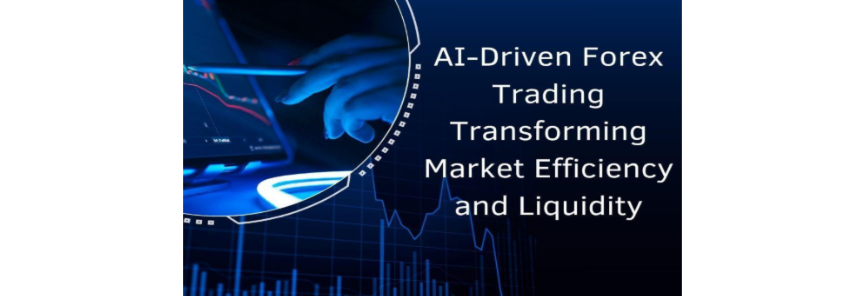In this digital world, integrating artificial intelligence (AI) into financial markets has redefined how traders navigate currency exchanges. Ganesh Marimuthu explores the profound impact of AI-driven strategies on forex trading, shedding light on the technological advancements that enhance liquidity, efficiency, and risk management. With extensive experience in algorithmic trading, his insights offer a deep understanding of AI’s transformative role in financial markets.
Machine Learning Enhancing Market Predictions
The adoption of machine learning models in forex trading has significantly improved market predictions. Sophisticated deep neural networks analyze vast amounts of structured and unstructured data in real time, enabling traders to make more informed decisions. These models process high-frequency trading signals, capturing intricate price patterns and market fluctuations within milliseconds. This has resulted in greater predictive accuracy and minimized execution risks, particularly during periods of market volatility.
Reinforcement Learning and Smart Order Execution
Reinforcement learning has revolutionized order execution by optimizing trade placement strategies. AI-powered execution algorithms can adapt to market conditions dynamically, reducing transaction costs and slippage. These systems leverage real-time data to execute trades at the most favorable price points, enhancing liquidity provision while maintaining market stability. The efficiency of smart order routing has also improved, minimizing latency and ensuring seamless transactions across multiple trading platforms.
The Role of Natural Language Processing in Sentiment Analysis
Natural Language Processing (NLP) has become an invaluable tool for forex traders, enabling real-time sentiment analysis of global financial news, central bank communications, and social media trends. AI-driven NLP models can interpret text-based data with remarkable accuracy, providing traders with insights into potential market movements. This capability has enhanced forex trading strategies by integrating macroeconomic indicators with AI-generated sentiment analysis, leading to more precise market forecasts.
Liquidity Management and AI-Powered Market Making
The introduction of AI in liquidity management has reshaped forex market microstructure. Non-bank liquidity providers now play a significant role, leveraging AI to execute trades with tighter bid-ask spreads. Machine learning algorithms continuously analyze order flow, ensuring optimal liquidity conditions even during market stress. As a result, forex trading has become more efficient, with AI-enhanced liquidity management reducing price volatility and improving execution quality.
AI’s Impact on Risk Management and Market Stability
AI-driven risk management frameworks have strengthened market stability by predicting potential volatility with higher accuracy. Advanced AI models assess risk exposure by processing vast amounts of financial data, identifying patterns that may indicate market instability. By automating risk mitigation strategies, AI ensures that forex traders can navigate financial uncertainties with reduced exposure to systemic risks. Institutions leveraging AI in risk management have reported a significant decrease in value-at-risk metrics while maintaining strong profit margins.
The Challenges of AI-Driven Forex Trading
AI-driven forex trading, while highly efficient, encounters hurdles like market fragmentation and regulatory challenges. The rise of electronic platforms has created inconsistencies in data standards, requiring advanced AI solutions for seamless integration. Regulators must continuously evolve to oversee AI-powered trading, ensuring transparency and mitigating risks like algorithmic market manipulation. Balancing innovation with regulation is crucial to maintaining a fair, efficient, and stable forex trading environment.
The Future of AI in Forex Markets
The future of AI in forex trading is set to be revolutionized by quantum computing, which will significantly enhance algorithmic efficiency and data processing capabilities. Quantum-enhanced machine learning models can analyze vast datasets at unprecedented speeds, identifying complex trading patterns and market trends with superior accuracy. This advancement will enable traders to execute high-frequency trades with minimal latency, reducing market inefficiencies and slippage. Additionally, AI-driven predictive analytics will refine risk management strategies, ensuring greater market stability. As these technologies mature, forex trading will become more transparent, cost-effective, and accessible, benefiting institutional investors and retail traders alike with smarter, data-driven decisions.
In conclusion, Ganesh Marimuthu highlights how AI-driven technologies have transformed forex trading by enhancing liquidity, refining predictive models, and improving market efficiency. While challenges remain, the integration of AI in trading strategies has set the stage for a more sophisticated and resilient financial ecosystem. As AI capabilities continue to expand, forex markets will experience further innovations, ensuring a dynamic and efficient trading environment for the future.

































